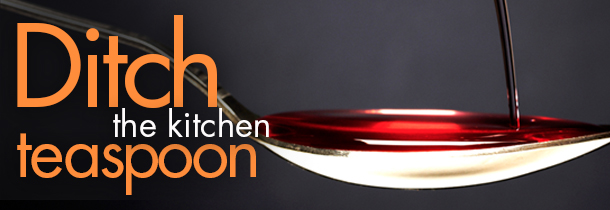
The teaspoon is a unit of measure so entrenched in American culture that most of us attach a literal definition to it: any spoon used to stir tea, or, more broadly, any spoon at all.
Officially, a teaspoon is 4.92 milliliters, but there’s a good chance the spoons in our silverware drawers are not. This imprecision would be an eccentric footnote if not for one of the household spoon’s most popular uses: administering liquid medications. When used for this purpose, significant health risks emerge that may be easily avoided.
Over and under dosing--especially of children--based upon the “teaspoon” dosing instruction, and subsequent use of an arbitrarily-sized household spoon, can prolong an illness, compound an existing ailment, and may lead to death.
USP has joined a growing chorus of public health organizations and government agencies calling for an end to the teaspoon as a unit of medication dosage measurement. Proposed changes to some of our General Chapters (guidelines on a variety of topics and activities related to medicines, foods, and dietary supplements) include removing the teaspoon as an acceptable unit of measurement, and recommending that all instructions for taking a liquid medicine come in milliliters.
The Centers for Disease Control and Prevention (CDC) and the National Council for Prescription Drug Programs, among others, are similarly pushing for changes to the ways medication instructions are presented, explained, and, ideally, understood.
The criticality of providing a correct dose of a liquid medicine is a shared responsibility among manufacturers, prescribers, pharmacists, and the consumer, and USP offers the following tips:
Consumers
- Ask the health professional prescribing a medicine if the medicine is in liquid form, or ask your pharmacist.
- Buy a dosing device that features metric measurements for accurate dosing, or ask your pharmacist for a dosing device. Most pharmacies carry them free of charge.
- Any over-the-counter liquid medicine should come with an appropriate dosing device; use this device and not a household spoon.
Manufacturers
- Supply the consumer with an appropriate dosing device that features only metric measurements for all over-the-counter liquid medicines.
Prescribers
- Write scripts only in metric measurements.
Pharmacists
- Fill prescriptions using metric measurements.
Standardizing measurements among these groups may greatly reduce the number of illnesses and deaths attributed to unintentional liquid medication overdoses.
USP is currently accepting comments on proposed revisions to general chapters <17> Prescription Container Labeling and <659> Packaging and Storage Requirements relating to deletion of the teaspoon.
Read about these changes and offer your comments by visiting our Pharmacopeial Forum (PF) page. The PF is a free resource that provides opportunities to interested parties to review and comment on proposed changes to USP monographs and general chapters.
Editor's Update:
Proposed revisions to General Chapter <17> Prescription Container Labeling, which was published in February 2016 will be official August 1, 2016. Revisions to General Chapter <659> will appear in USP 40 in November 2016, and will include use of the metric system of measurement rather than the teaspoon.


